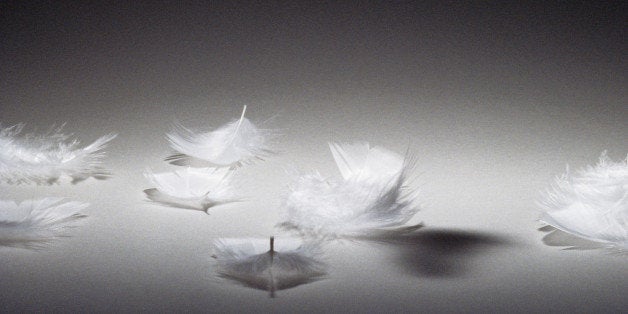
Growing up, I had a hopeless indifference to fashion; to the despair of my mother I wore green "Toughskin" jeans and my hair was endlessly tangled in tree branches. Meanwhile, ducks in cartoons wore smartly tailored blue jackets and spoke with funny voices while Mother Goose embodied all the cozy security of childhood.
Now, an unmentionable number of decades later, my indifference to fashion has evolved into ineptitude and my hair is shorter. But I have a whole new awareness of the animals that produce the down and feathers that are part of my daily life -- pillows, duvets, jackets, sleeping bags and even the couch I am sitting on. They all contain down or feathers from these birds -- the living breathing versions of the iconic ducks and geese of my childhood.
What I did not know as a child, was that these 'waterfowl,' which are primarily raised for their meat, can sometimes be subjected to inhumane treatment. The issues can range from general lack of care to practices that are considered cruel and unnecessary, such as live-plucking and force-feeding.
In most supply chains, down and feathers are removed from the birds after they have been slaughtered, but in some cases they are removed while the birds are still alive -- a process that can be painful and harmful. While live plucking is legally prohibited in the European Union, it is still possible to 'harvest' the down during the natural molting cycles of the birds. But this still leaves the birds vulnerable to being hurt during the process (particularly with the time pressures of industrialized farming), and in reality, it is very hard to identify live-plucking.
Foie gras, considered a delicacy by some, literally means 'fatty liver.' It is the result of ducks or geese being force-fed: Tubes are inserted into their throats to force them to consume more than they naturally would. The result is essentially a diseased liver that is up to 10 times its normal size. Laws vary: from the California ban on the sale of any products from force-fed birds to French law, which states, "Foie gras belongs to the protected cultural and gastronomical heritage of France." Beyond their enlarged livers, these birds can also be another source of down and feathers.
Animal rights groups have been highly critical of both of these practices. They have posted graphic images that have brought the issues into the awareness of consumers, and have publicly challenged brands that could not ensure that their down was cruelty-free.
Clearly the industry needs to change. But it is difficult for companies using down to influence the treatment of the animals, since down and feathers only represent roughly 10 percent of the value of the bird. The primary purpose in raising waterfowl is for their meat, which is why the main production areas are China, Hungary, Ukraine and Poland, where duck and goose meat are popular menu items.
So are Mother Goose and Donald Duck left hung out to dry? Fortunately, the answer is no. In my role as Director of Integrity for Textile Exchange, I have been lucky to be involved in the development of the Responsible Down Standard, which ensures that down or feathers come from animals that have been treated well. In what has turned out to be an excellent example of companies doing the right thing, brands and their suppliers have committed to making products with RDS-certified down and are even participating in making it a better standard. The outdoor industry, with its puffy jackets and warm sleeping bags, has led the charge, and there is growing interest from companies involved in bedding, hospitality and home products.
At the end of the day, it is the collective efforts of farmers, producers, manufacturers, brands, governments, NGOs and consumers that will shape the conditions these geese and ducks are raised in. As these efforts move forward, consumers can make a clear choice to vote with their dollars for the companies who are addressing animal welfare.
I look forward to the day when I can wear and fall asleep with, under and on a clean conscience, and I can read Mother Goose to my kids without a sense of irony.